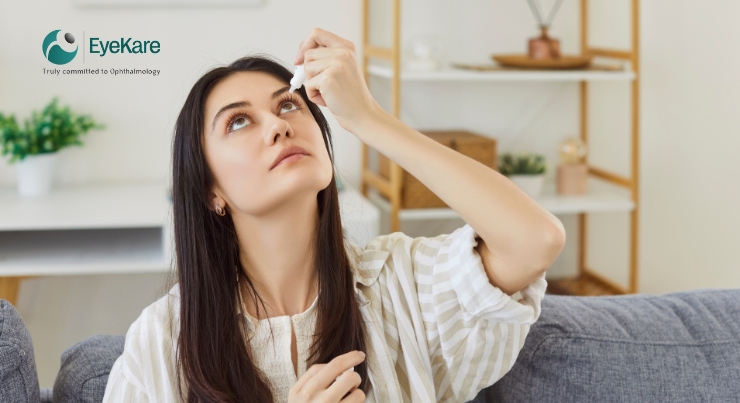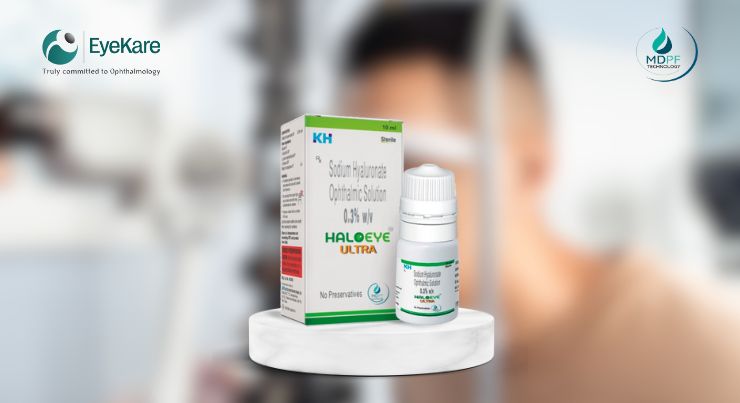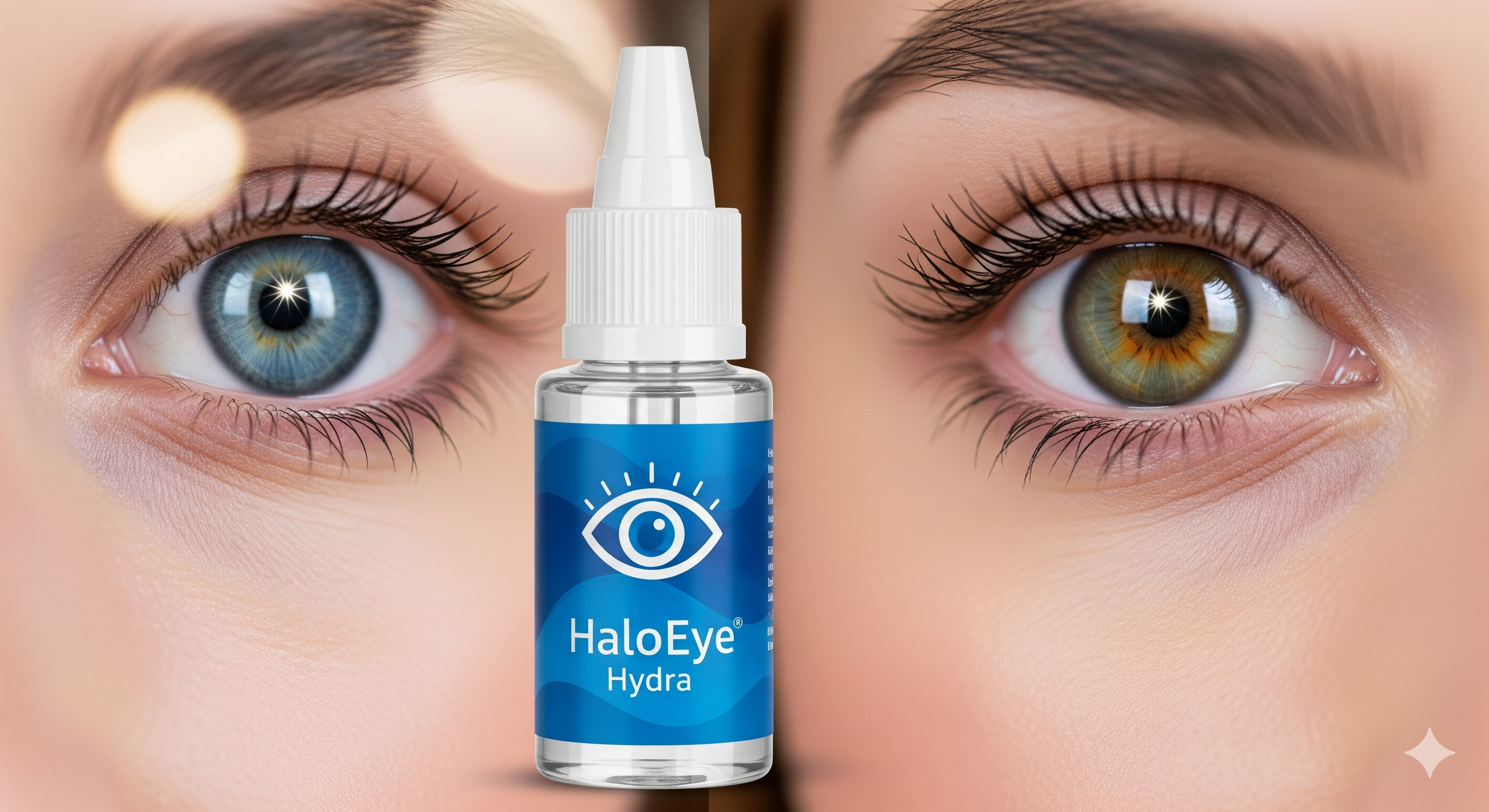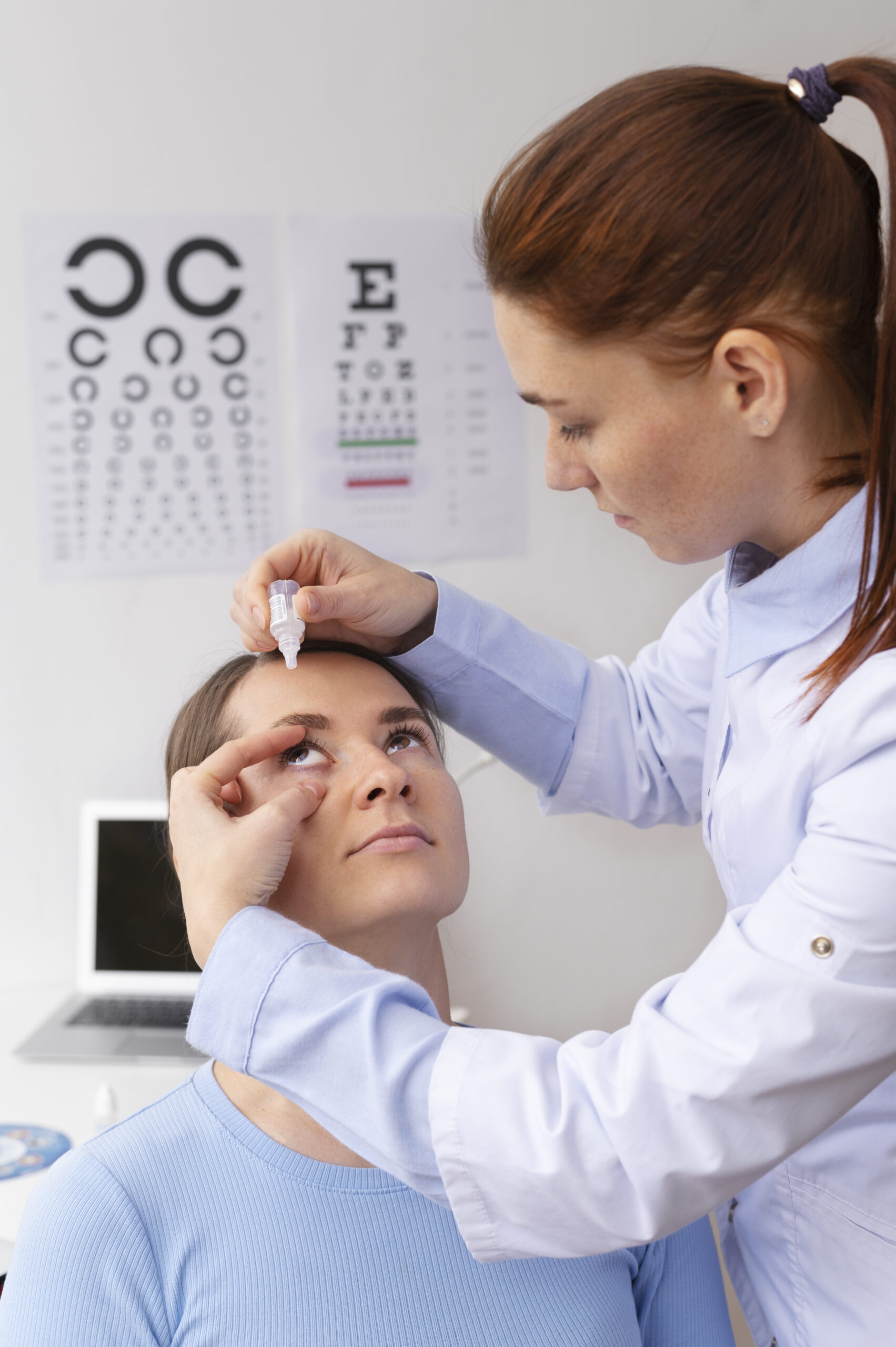Top Lifestyle Mistakes That Make You Reach for Eye Care Drops
Your eyes are constantly working — from the moment you wake up to the time you fall asleep. But amidst our daily routines, we often neglect proper eye care. From endless screen scrolling to skipping sunglasses on a sunny day, seemingly harmless habits may be silently damaging your vision. If you’re experiencing irritation, redness, or fatigue, your eyes may already be screaming for help. That’s where the best eye drops for dry eyes can provide quick relief — but prevention is always better than cure.
In this blog, we’ll explore 10 everyday habits that could be harming your eyes, and how to correct them. Plus, we’ll highlight the importance of using dry eye drops, making smart lifestyle choices, and including eye care drops in your daily wellness routine.
1. Excessive Screen Time Without Breaks
We live in a digital world, and whether it’s work or entertainment, screens dominate our lives. Staring at a screen for hours causes your blink rate to drop drastically, which can lead to dry eyes and blurred vision.
What You Can Do:
- Follow the 20-20-20 rule: Every 20 minutes, look at something 20 feet away for 20 seconds.
- Use eye care drops or the best eye drops for dry eyes to keep your eyes lubricated, especially during long working hours.
2. Sleeping With Makeup On
Mascara, eyeliner, and eyeshadow can clog oil glands around your eyes if not removed properly. This can lead to irritation, styes, or infections — and ultimately contribute to dry eyes.
Quick Fix:
- Always remove eye makeup thoroughly before sleeping.
- Use a gentle, ophthalmologist-approved cleanser to keep the eye area clean.
3. Skipping Sunglasses on Sunny Days
UV rays don’t just damage your skin — they’re also harmful to your eyes. Unprotected exposure can lead to long-term issues like cataracts, macular degeneration, and dry eyes.
Eye-Saving Habit:
- Invest in sunglasses that offer 100% UVA and UVB protection.
- On particularly windy or dry days, shield your eyes to avoid moisture loss. Dry eye drops can also help in such weather conditions.
4. Touching or Rubbing Your Eyes Frequently
Whether it’s due to tiredness or allergies, rubbing your eyes can break blood vessels, introduce bacteria, and increase dryness.
Better Practice:
- Use a cool compress or eye care drops instead.
- If your eyes feel itchy or irritated, opt for the best eye drops for dry eyes to soothe and refresh them.
5. Not Using the Right Dry Eye Drops
Not all eye drops are created equal. Using drops that aren’t meant for your condition can do more harm than good. For example, some eye drops may contain preservatives that worsen dry eyes.
What To Look For:
- Choose preservative-free dry eye drops.
- Consult with your eye doctor to find the best eye drops for dry eyes that suit your specific needs.
6. Not Getting Enough Sleep
Lack of sleep can cause red, dry, and puffy eyes. Over time, sleep deprivation impacts tear production and eye health overall.
Tip:
- Aim for 7–8 hours of quality sleep.
- If dryness persists upon waking, keep a bottle of eye care drops by your bedside.
7. Taking Hot Showers or Facing Direct AC Vents
While a hot shower feels relaxing, the heat and steam can dry out the natural moisture in your eyes. Similarly, sitting directly under an AC vent can worsen dry eyes.
Small Adjustments:
- Use a humidifier in your room or office.
- Apply dry eye drops post-shower or when in air-conditioned environments.
8. Wearing Contact Lenses for Too Long
Contacts restrict oxygen flow to your eyes and can absorb moisture from the surface of the eye, causing irritation and dry eyes.
Healthy Lens Habits:
- Never sleep in your lenses unless advised.
- Take breaks and hydrate your eyes using the best eye drops for dry eyes.
9. Not Cleaning Eye Tools & Accessories
Reusing old mascara brushes, dirty contact cases, or not washing your hands before touching your eyes can lead to infections and irritation.
Preventive Tips:
- Replace eye makeup every 3 months.
- Sanitize contact lens cases regularly and wash your hands before applying eye care drops or handling lenses.
10. Ignoring Early Signs of Eye Fatigue
Many people wait until vision problems become serious before seeing an eye doctor. Ignoring dryness, light sensitivity, or frequent redness is a big mistake.
Take Action:
- Don’t wait for discomfort to escalate.
- Include dry eye drops in your daily care if you face regular dryness.
- Regular check-ups can help you get the best eye drops for dry eyes based on your eye condition.

When Should You Start Using Eye Care Drops?
If your eyes feel tired, gritty, or watery — especially after reading, working on a screen, or being in dry environments — it might be time to start using eye care drops. The right product can restore moisture, reduce irritation, and improve clarity of vision.
When choosing the best eye drops for dry eyes, look for:
- Preservative-free options
- Drops specifically formulated for chronic dry eyes
Doctor-recommended brands with clinically proven results
Understanding the Root Causes of Dry Eyes
Before treating dry eyes, it’s essential to understand why they occur. Dryness can stem from a wide range of causes — environmental factors, lifestyle habits, underlying medical conditions, or even medications.
Common Causes of Dry Eyes:
- Environmental triggers: Air pollution, windy weather, and air conditioning can sap moisture from your eyes.
- Age: Tear production decreases as we age, making dry eyes more common in people over 50.
- Medical conditions: Diabetes, thyroid problems, and autoimmune diseases like Sjögren’s syndrome often lead to chronic dry eyes.
- Screen use: Extended screen time reduces blinking frequency, leading to faster tear evaporation.
- Medications: Antihistamines, antidepressants, and birth control pills can also reduce natural tear production.
Regardless of the cause, consistent use of eye care drops or the best eye drops for dry eyes can help manage symptoms and improve eye comfort dramatically.
Choosing the Right Eye Drops for You
With so many products on the market, selecting the ideal solution for your dry eyes can be overwhelming. Here’s a quick guide to understanding different types of dry eye drops:
1. Artificial Tears
- These are the most common and widely available eye care drops.
- Great for mild cases of dry eyes caused by temporary strain or environment.
- Look for preservative-free variants to avoid irritation from long-term use.
2. Lubricating Eye Gels or Ointments
- Thicker consistency, ideal for nighttime use.
- Offers long-lasting relief but may blur vision temporarily after application.
3. Prescription Eye Drops
- These include medicated solutions like cyclosporine (Restasis) or lifitegrast (Xiidra).
- Recommended for chronic or medically diagnosed dry eye conditions.
4. Specialty Drops with Electrolytes or Lipids
- Help restore the tear film’s natural composition.
- Perfect for people with evaporative dry eyes or meibomian gland dysfunction.
Remember: The best eye drops for dry eyes are the ones tailored to your lifestyle, symptoms, and eye health. Always consult an ophthalmologist if over-the-counter dry eye drops don’t bring relief.
Diet and Lifestyle Tips for Healthy, Moisturized Eyes
Dryness doesn’t always begin in the eyes — sometimes, it’s a sign that your body is lacking hydration or essential nutrients. Supporting your eyes from within can significantly reduce the need for excessive use of eye care drops.
Nutrition Tips for Eye Moisture:
- Omega-3 Fatty Acids: Found in flaxseed, chia seeds, walnuts, and fish like salmon, omega-3s help improve tear quality.
- Hydration: Drink at least 2–3 liters of water daily to maintain moisture balance.
- Vitamin A & E: These vitamins promote tear production and prevent dryness.
Add these foods to your diet and complement them with the best eye drops for dry eyes to stay ahead of symptoms.
Mindful Practices to Prevent Dry Eyes Daily
Small daily rituals can go a long way in promoting eye comfort. Pairing mindful habits with dry eye drops creates a powerful eye-care routine.
Try These:
- Palming: Gently cup your warm hands over closed eyes for 30 seconds to relax eye muscles and reduce strain.
- Eye Blinking Exercise: Every hour, close your eyes gently for 5 seconds, then squeeze tightly for 5 seconds. Repeat 5 times.
- Cool Compress: Helps relieve inflammation and soothes tired, dry eyes.
When paired with eye care drops, these simple habits will improve lubrication, reduce fatigue, and keep your vision clear and healthy.
Travel Tips to Avoid Dry Eyes on the Go
Airplane cabins, long drives, or even sightseeing under the sun can trigger dry eyes. Always pack smart and be ready to defend your eyes wherever you go.
Travel Essentials for Eye Comfort:
- Sunglasses: Block harsh light and reduce tear evaporation.
- Humidifier (portable): Especially useful in hotel rooms or dry destinations.
- Dry eye drops: Keep them in your carry-on and apply as needed.
- Lubricating gel or ointment for overnight moisture if you’re prone to night-time dryness.
Whether you’re exploring new cities or attending long meetings, keeping the best eye drops for dry eyes on hand can be a lifesaver.
Real Talk: When to See a Professional
While over-the-counter dry eye drops help manage symptoms, persistent or worsening dry eyes can signal a deeper issue. If you experience any of the following, schedule a professional eye exam:
- Blurry vision that comes and goes
- A burning or gritty sensation that doesn’t improve with drops
- Sensitivity to light or difficulty wearing contacts
- Redness, inflammation, or discharge
Your doctor can recommend clinical treatments or even advanced solutions like punctal plugs or prescription eye care drops suited for chronic dry eye syndrome.
Conclusion: Protect Your Eyes, Every Single Day
We often take our eyesight for granted until we start noticing discomfort. The good news? It’s never too late to make better choices for your eyes.
Start by breaking the bad habits listed above. Add regular blinking, screen breaks, healthy foods, and proper hydration to your daily routine. And most importantly, choose the best eye drops for dry eyes — because your eyes deserve consistent care, comfort, and protection.
Whether you’re dealing with seasonal dryness or everyday strain, using dry eye drops and making mindful changes can restore comfort and clarity to your vision.







